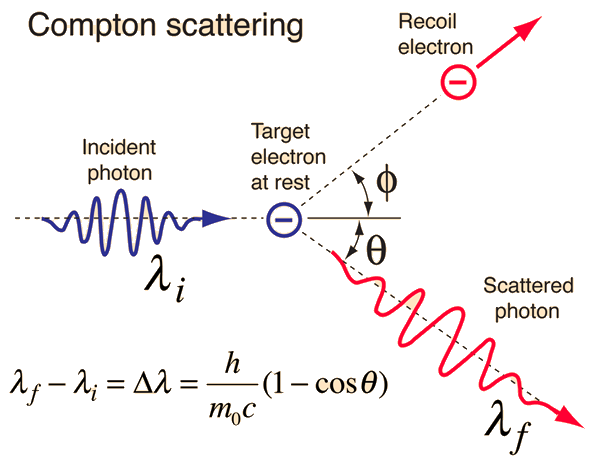
Posted on 11/19/2003 3:30:55 AM PST by Boot Hill

Explanation: Light is more complicated than we thought. When astronomers measure light, they are usually concerned with its direction, energy, and spin polarization (sometimes). Recently, however, it has been more broadly realized that photons can also have orbital angular momentum (OAM), an attribute classically analogous to the Earth orbiting the Sun as well as spinning on its axis. Pictured above, the wave-front of a photon with OAM is shown to be twisted, in contrast to the flat plane of zero OAM light. Light with OAM might be used to increase the information content of communication or to discern specific types of astronomical sources. Passing through a common lens, light without OAM focuses to a point, whereas light with OAM focuses to a ring. Most light bouncing around the cosmos, however, is expected to have so little (or zero) OAM that the created ring is too small to measure. Even given other promising methods for measurement, exploiting OAM for astronomical discovery might be as much an issue of observational practicality as theoretical possibility.
--BH
PatrickHenry says: "The mass of the photon (whatever that is) won't change, nor it's speed (in vacuuo). So I don't see any changes in momentum. Only changes in wavelength seem likely..."
At first blush, the problem seems even more troublesome than that. You see, the photon has no mass, so when we say that momentum is p = m*v (momentum equals mass times velocity), it would first appear that, since the photon has no mass, neither can it have any momentum whatsoever!
And worse, since energy is e = m*v2 = m*c2 it would also appear that (without mass), neither can the photon can have any energy. (Of course, anyone who has ever sat in the sunlight, intuitively knows better than that.)
However, with just a little mathematical slight of hand...
Einstein showed us that the energy of a quanta of light (a photon) can also be determined from e = h*f (Planck's constant times frequency). The fact that energy could equal both h*f as well as m*v2, makes sense if you reduce both of those terms to their fundamental dimensions (units of mass, length, time) and see that they are both m*l2/t2, which are the fundamental dimensions of energy.
Since momentum equals m*v and energy equals m*v2, all we need do to arrive at momentum is to divide energy by velocity, p = m*v = m*v2/v. Therefore, since we know that e = h*f, the equation for momentum would become p = h*f/v = h*f/c.
Rearranged in terms of frequency (to see if we have any red shift), the equation becomes f = p*c/h. Since variables c and h are constants, the equation says that the only way for frequency to change is for momentum to change. And since wavelength is inversely proportionate to frequency, L = c/f, when frequency lowers (red shift), the wavelength must lengthen.
--Boot Hill
--BH
Close, but keeping in mind that the photon has no real mass, let's rewrite your statement like this:
"Because velocity of the photon and Planck's constant aren't going to change, the momentum (change) shows up as wavelength (change)."
--Boot Hill
Looks like you brought em in kicking and screaming. Good job.
p1 = h*f1/c
p2 = h*f2/c
Dp = h*Df/c
Df = Dp*c/h
Or if you prefer
Dl = h/(Dp*c)

The scattering of photons from charged particles is called Compton scattering after Arthur Compton who was the first to measure photon-electron scattering in 1922. When the incoming photon gives part of its energy to the electron, then the scattered photon has lower energy and according to the Planck relationship has lower frequency and longer wavelength. The wavelength change in such scattering depends only upon the angle of scattering for a given target particle. The constant in the Compton formula above can be written
Because there is a gravitationally induced red shift, it is not unreasonable for a person to intuit an analogous interaction between light and either magnetic or electric fields that might induce a similar effect. This would seem to be especially reasonable, since the wave theory of light describes the wave as being composed of rapidly vibrating electric and magnetic fields.
However, I'm aware of no comparable effect caused directly from magnetic or electric fields.
I underscore "directly" because there are many effects that have been discovered which indirectly affect light when it is reflected, refracted, or transmitted through materials that are under the influence of strong magnetic or electric fields. To name a very few, there are the Faraday effect, the Kerr effect, the Pockels effect, etc.
However, even with these indirect effects, there are none that I'm aware of that cause a continuous variation in frequency, as we find with red shift.
--Boot Hill
I'm assuming your comment was posted as humor, but in case it wasn't (and for the benefit of other readers), I'll point out that they are distinguishing photons that have spin (spin angular momentum) from those that have twist, or as they also refer to it, orbiting (orbiting angular momentum).
--Boot Hill
A song I wrote and sing to my new grandson:
Twinkle, twinkle beam of light,
How I wonder what is right,
Are you particle or are you wave?
Tis quantum knowledge that I crave.
Twinkle, twinkle little photon,
Now I know what makes you shine on!
--Boot Hill
Disclaimer: Opinions posted on Free Republic are those of the individual posters and do not necessarily represent the opinion of Free Republic or its management. All materials posted herein are protected by copyright law and the exemption for fair use of copyrighted works.